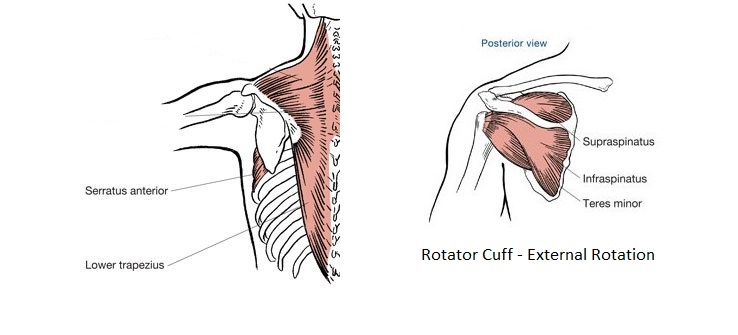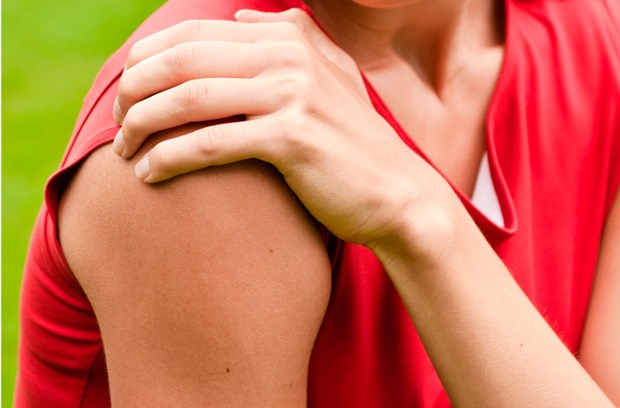Shoulder rehab exercises you can do in the gym
Remember what lifting weights was like in your 20’s?
Monday, of course, you started with chest. Bench press, inclines, dumbbell flys – pumping away, no shoulder pain at all.
Shoulder rehab exercises? No healthy 20-something weight lifter thinks about those.
And then you turned 50. And all of a sudden, your shoulders start bugging you.
The same routine that was so productive and so much fun back in the day, now leaves your shoulders killing you for a couple days afterwards.
What’s going on here? More importantly, what are you supposed to do about it?
In this post, we will take a look at some of the age-related changes that could result in shoulder pain when working out. And, I’ll show you a couple shoulder rehab exercises that you can easily incorporate into your strength training program to alleviate nagging shoulder pain.
Common causes of shoulder pain in people over 50

In order for the shoulder joint to stay pain free, the joint surfaces must remain smooth, and the humeral head must remain centered in the shoulder joint. If the joint surfaces or surrounding muscles become damaged or weakened, misalignment can occur which eventually results in shoulder pain.
This can be caused by:
Arthritic changes – Over time, the articular cartilage covering the joint surfaces breaks down, and these surfaces become roughened. Two rough surfaces rubbing together during movement can cause pain.
Instability – Since your arms hang down from your shoulders, the shoulder joint is not supported by bone, but rather by tendons and ligaments. The greater the laxity of those tendons and ligaments, the more shoulder instability there will be, and the potential for pain and injury will be higher. (In physical therapy, we see this a lot with stroke patients in the shoulder of their affected side.)
Past injuries – When I was 18, I had surgery on my right shoulder to prevent recurring dislocations caused by wrestling. The surgery purposely limited my range of motion, so my shoulder wouldn’t keep popping out of the socket. Now that I’m in my sixties, certain movements cause me discomfort that I don’t feel in my left shoulder.
Poor posture – As you get older, there’s a tendency to develop a slouched posture, which can adversely effect your shoulder joint mechanics. You start to sit and stand with rounded shoulders, which over time tightens the chest and frontal shoulder muscles, and weakens the rear muscles that are so important for avoiding shoulder pain.
Atrophy – This means a decrease in the size and strength, due to disuse, of the lesser-known shoulder muscles we talked about earlier that you never bothered to train when you were 25. If those muscles are weak, the deltoid will pull your humerus up against your acromion, causing a painful condition known as subacromial impingement.
Alleviating shoulder pain associated these types of problems via strategic muscle strengthening is the purpose of the shoulder rehab exercises I’m about to show you.
The shoulder rehab exercises
Low trap pulldown
The lower trapezius is one muscle that plays an important role in scapula (shoulder blade) movement and positioning. If your lower traps are weak, you’ll have a tougher time lifting your arm overhead, and strengthening them will help your posture too.
To isolate this part of the traps during a pulldown, at the beginning of the movement when your elbows are straight, try to pull your shoulder blades down and together first, then begin the pulldown (video below). Repeat for every rep.
Shoulder External rotation
This one will strengthen 3 of the deepest muscles of your shoulder joint, the external rotators of the rotator cuff complex. The main function of the rotator cuff is to stabilize and center the humeral head in the joint socket, the glenoid cavity.
A simple way to do this is side lying with a dumbbell (video below). Note the towel roll between the upper arm and the side of the body – doing this allows your upper arm bone (the humerus) to rotate more freely; it’s a much more comfortable way to perform the exercise than just resting your arm against your side. A little weight goes a long way on this one, start with the smallest dumbbell you have and work your way up as needed.
The bottom line on shoulder rehab exercises
- For men and women over 50, there’s a lot of accumulated wear and tear over the years on the shoulder joints.
- By integrating these shoulder rehab exercises into your routine, you can help your shoulder joints stay in proper alignment and moving freely.
- To strengthen your lower traps without adding any time to your workout, just add the low trap pulldown movement at the beginning of your your pulldown, then do the pulldown, then release the tension on your lower trap at the end of that rep, and repeat.
- Include the external rotation exercise at the end of your workout.
- If you’re on one of my workout programs, you can use either or both of these exercises as on of your Rebuilding Exercises for that day.
- If you’re also doing 2 other rebuilding exercises for other body parts, alternate the low trap pulldown with external rotation every other workout.
Making these simple changes will help keep your shoulders strong in a balanced way, alleviate weakness-related pain, and set you up to reach your highest possible level of pain-free shoulder joint function.
Thoughts or Questions about shoulder rehab exercises? Leave a comment below!
Related content:

